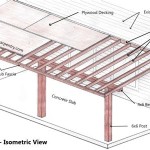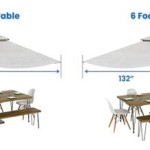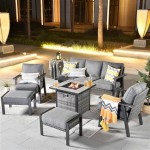Patio Vegetable Garden Containers: Cultivating Freshness in Limited Spaces
The allure of fresh, homegrown vegetables extends beyond expansive garden plots. For urban dwellers, apartment residents, or individuals with limited yard space, patio vegetable garden containers offer a viable and rewarding alternative. This method involves cultivating edible plants in pots, raised beds, and other receptacles on balconies, patios, and decks. The success of container vegetable gardening hinges on selecting appropriate containers, choosing suitable plant varieties, providing adequate soil and water, and managing potential pests and diseases.
This article will delve into the essential aspects of establishing and maintaining a thriving patio vegetable garden container setup. The focus will be on providing practical information and actionable advice to empower individuals to cultivate their own fresh produce in limited spaces.
Choosing the Right Containers and Location
The selection of containers is a crucial first step in establishing a patio vegetable garden. Several factors influence this decision, including container size, material, drainage, and overall aesthetics. Larger containers generally offer greater stability and allow for more root development, leading to healthier and more productive plants. However, larger containers also require more soil and may be heavier, necessitating careful consideration of the patio or balcony's weight-bearing capacity.
Container materials vary widely, each with its own set of advantages and disadvantages. Plastic pots are lightweight, inexpensive, and readily available in various shapes and sizes. However, they can heat up quickly in direct sunlight, potentially harming plant roots. Terracotta pots are porous, allowing for better air circulation and drainage, but they can also dry out more quickly than plastic pots. Wooden containers offer a natural aesthetic and good insulation, but they may require lining to prevent rot. Metal containers can also heat up quickly, but they are durable and long-lasting, provided they are treated to prevent rust. Ultimately, the best container material depends on individual preferences, budget, and the specific needs of the plants being grown.
Adequate drainage is essential for preventing root rot and ensuring healthy plant growth. Containers should have drainage holes at the bottom to allow excess water to escape. Lining the bottom of the container with gravel or shards of broken pottery can further improve drainage. Selecting a well-draining potting mix is also critical for preventing waterlogging.
The location of the patio vegetable garden is another critical factor influencing its success. Most vegetables require at least six to eight hours of direct sunlight per day. Therefore, the patio or balcony should be situated in a sunny location. Consider the direction the patio faces and any potential obstructions that may block sunlight, such as buildings or trees. Some vegetables, such as lettuce and spinach, can tolerate partial shade, but fruiting vegetables like tomatoes, peppers, and cucumbers require full sun to produce a plentiful harvest.
Wind exposure is another factor to consider. Strong winds can damage plants, especially young seedlings. If the patio is exposed to strong winds, consider providing windbreaks, such as fences or screens, to protect the plants. Additionally, proximity to a water source is essential for easy watering. Carrying heavy watering cans across long distances can be cumbersome and time-consuming. Ideally, the patio should be located near an outdoor faucet or a readily accessible water source.
Selecting the Right Vegetable Varieties and Soil
Not all vegetable varieties are equally suited for container gardening. Compact or dwarf varieties are generally the best choice for limited spaces. These varieties are bred to be smaller and more manageable, making them ideal for growing in pots and containers. Bush beans, dwarf tomatoes, patio cucumbers, and compact peppers are all excellent choices for container gardening.
When selecting vegetable varieties, also consider the climate and growing season. Choose varieties that are well-suited to the local climate and that have a relatively short growing season. This will ensure that the plants have enough time to mature and produce a harvest before the end of the season. Seed packets and plant labels typically provide information about the growing season and climate requirements of each variety.
The soil used in container vegetable gardens is just as important as the container itself. Garden soil is typically too heavy and dense for container gardening, as it can become compacted and poorly drained. Instead, use a lightweight, well-draining potting mix specifically formulated for container gardening. These mixes typically contain a blend of peat moss, perlite, and vermiculite, which provide good drainage and aeration. Avoid using soil that contains fertilizer pellets initially, as this can cause fertilizer burn.
Amending the potting mix with compost can further improve its fertility and drainage. Compost is a rich source of organic matter that helps to retain moisture and nutrients. It also improves the soil's structure and aeration. Add compost to the potting mix at a rate of about one part compost to three parts potting mix.
Consider using raised beds as a type of container. Raised beds offer several advantages over traditional ground planting, including better drainage, improved soil quality, and easier access for tending and harvesting. They also allow gardeners to extend the growing season by warming the soil earlier in the spring and retaining heat later in the fall. Raised beds can be constructed from various materials, including wood, concrete blocks, and metal. The size and shape of the raised bed can be customized to fit the available space and the gardener's preferences.
Watering, Fertilizing, and Pest Control Strategies
Proper watering is essential for the success of any vegetable garden, and container gardens are no exception. Container plants tend to dry out more quickly than plants grown in the ground, especially during hot, sunny weather. Therefore, it is important to water container vegetables regularly, checking the soil moisture level frequently. The frequency of watering will depend on several factors, including the type of plant, the size of the container, the weather, and the type of potting mix used.
Water deeply and thoroughly, ensuring that the water reaches the roots of the plants. Avoid shallow watering, which can lead to root rot and other problems. Water in the morning or evening to minimize water loss through evaporation. Use a watering can or hose with a gentle spray nozzle to avoid damaging the plants. Consider using a drip irrigation system or soaker hose to deliver water directly to the roots of the plants, conserving water and reducing the risk of fungal diseases. Mulching the soil surface around the plants can also help to retain moisture and suppress weed growth.
Container vegetables require regular fertilization to thrive. Because plants in containers have a limited amount of soil to draw nutrients from, it is necessary to supplement their diet with fertilizer. Use a balanced fertilizer specifically formulated for vegetables, following the instructions on the label. Fertilize regularly throughout the growing season, especially during periods of rapid growth and fruit production.
Slow-release fertilizers can provide a steady supply of nutrients over an extended period. Liquid fertilizers are quickly absorbed by the plants and are ideal for giving plants a boost during periods of stress or nutrient deficiency. Organic fertilizers, such as compost tea and fish emulsion, are a natural and sustainable way to nourish container vegetables. Avoid over-fertilizing, as this can lead to nutrient imbalances and harm the plants.
Pest and disease management is an important aspect of container vegetable gardening. Container plants are susceptible to many of the same pests and diseases as plants grown in the ground, including aphids, spider mites, whiteflies, and fungal diseases. Regularly inspect the plants for signs of pests or diseases. Early detection and treatment are essential for preventing serious problems.
Use organic pest control methods whenever possible. Insecticidal soap, neem oil, and horticultural oil are effective for controlling many common pests. Introduce beneficial insects, such as ladybugs and lacewings, to help control pest populations. Remove diseased leaves and stems promptly. Ensure good air circulation around the plants to prevent fungal diseases. Avoid overhead watering, which can promote the spread of fungal spores. Consider using disease-resistant varieties to minimize the risk of disease problems.
Companion planting can also be used to deter pests and attract beneficial insects. Marigolds, for example, are known to repel nematodes and attract beneficial insects. Basil is a good companion plant for tomatoes, as it repels pests and improves the flavor of the tomatoes. Planting a variety of flowers and herbs alongside container vegetables can also help to create a more balanced and healthy ecosystem.

Dammann S Garden Company Save Space With Container Vegetable Gardening

Patio Vegetable Garden Setup And Tips To Get Growing

35 Creative Container Vegetable Garden Ideas A Piece Of Rainbow
Container Gardening With Vegetables Gasper Landscape Design Construction

Patio Vegetable Garden Setup And Tips To Get Growing

15 Best Vegetables For Container Gardens

Grow A Container Vegetable Garden On Your Patio Tips The Foodie Gardener

How To Create A Patio Vegetable Garden With Planters Pots

Create A Patio Vegetable Garden Gardener S Supply

Container Vegetable Gardening For Beginners Attainable Sustainable








